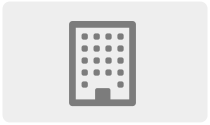Introduction to R and Bioconductor lecture
Introduction to R and Bioconductor lecture
Keywords
R-programming
Authors
- Jenny Drnevich (@jenny)
Type
- Lecture
Description
This lecture gives an overview of the R and Bioconductor projects, plus the basics of R object types and programming language structure.
Aims
This lecture aims to take the novice and turn them into a beginning R user. We will describe the R environment and programming language structure so they can start to read and write code and know where to get additional help. The Bioconductor project will be described in general.
Prerequisites
- Basic computer literacy (point-and-click interface)
Target audience
Graduates students/post docs/beginning faculty with an interest in learning R, particularly for genomic data analysis. No experience with R or other programming languages are required.
Learning objectives
- Be able to describe what R is and how the programming environment works
- Be able to download and install R and add-on packages
- Be able to read, understand and write simple R code
- Appreciate how R can be used to analyze various types of scientific data, particularly genomic data using packages from Bioconductor.
Materials
- [material 1; see (instructions)[https://microasp.upsc.se/ngs_trainers/Materials/wikis/Templates#documenting-new-material] and guidelines(https://microasp.upsc.se/ngs_trainers/Materials/wikis/Git-Repos#guidelines).
Data
[Where to find the data, see our FTP solution]
Timing
4 hours (lecture: 45 min, Instructor-led exercises: 1.5 hrs, free time for swirl exercises:
1.5 hrs)
Content stability
Should be stable for any R version > 3.0
Technical requirements
- R version > 3.0
- Add-on packages: swirl, limma
- Optional: RStudio
Literature references
- Programming tools: Adventures with R
- Orchestrating high-throughput genomic analysis with Bioconductor
Keywords: R-programming
Activity log

 United Kingdom
United Kingdom
